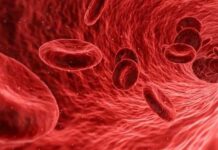Epilepsy and autism spectrum disorders (ASD), show a remarkable degree of comorbidity and may share pathological mechanisms. In a study conducted by University of California, researchers have explored the link between the two.
“One hypothesis is that during brain development, inhibitory neurons, which regulate brain rhythms, develop in an abnormal manner,” Viji Santhakumar, associate professor, Department of Molecular, Cell and Systems Biology, at the University said. “If this is true, then how the brain circuit gets set up is abnormal, which may lead to both autism and epilepsy.”
Santhakumar and her team focused on inhibitory neurons in mice. She explained that unlike excitatory neurons that lead to a forward propagation of information, inhibitory neurons work like a brake by suppressing and sculpting the activity of downstream neurons. The researchers generated mice with a global mutation in all cells that prevented the inhibitory neurons from migrating to their normal location in mature brain circuits. Not surprisingly, they found a reduction in inhibitory currents in the hippocampus, a region of the brain known for memory function. Notably, the mutant mice showed behavioral traits associated with ASD and were more prone to seizures.
“There may be a developmental abnormality in establishing inhibitory neuron circuits. If we can identify what the molecular pathways are, we may be able to intervene early and make sure the inhibitory circuit is maintained. How the circuit develops may play a key role in the co-occurrence of autism and epilepsy. Understanding these mechanisms may help develop more targeted cures,” she added.
Results of the study, titled “Reduced hippocampal inhibition and enhanced autism-epilepsy comorbidity in mice lacking neuropilin 2” suggest that a common underlying defect in circuit formation could contribute to both ASD and epilepsy. The findings of the current study open the doors for future work to test whether mutations, when restricted to specific cell types and developmental periods, can help distinguish between the role of inhibitory neuron migration and maintenance of circuit connections in the development of ASD or epilepsy.



























